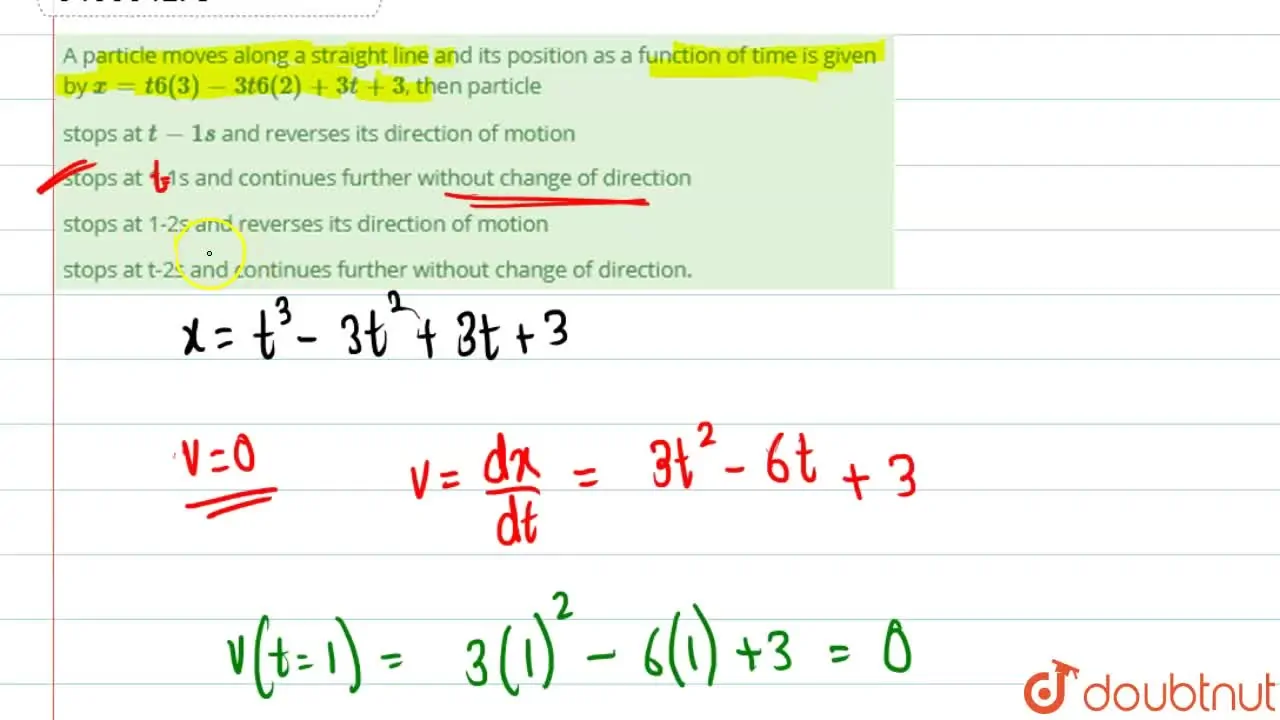A particle moves along a straight line and its position as a function of time is given by x=t6(3)−3t6(2)+3t+3, then particle
stops at t−1s and reverses its direction of motion
stops at 1-1s and continues further without change of direction
stops at 1-2s and reverses its direction of motion
stops at t-2s and continues further without change of direction.
Step by step video & image solution for A particle moves along a straight line and its position as a function of time is given by x = t6(3) - 3t6(2) +3t +3, then particle by Physics experts to help you in doubts & scoring excellent marks in Class 12 exams.
Related Playlists
Similar Questions
A particle moves in a straight line and its position x at time t is given by x2=2+t. Its acceleration is given by :-
View SolutionA particle moves along a straight line. Its position at any instant is given by x=32t−8t33 where x is in metres and t in seconds. Find the acceleration of the particle at the instant when particle is at rest.
View SolutionA particle moves along a straight line such that its displacement at any time t is given by s=3t3+7t2+14t+5. The acceleration of the particle at t=1s is
View SolutionA particle is moving along straight line whose position x at time t is described by x=t3−t2 where x is in meters and tis in seconds . Then the average acceleration from t=2 sec. to t=4 sec, is :
View SolutionA particle moves along a staight line such that its displacement at any time t is given by s=t3−6t2+3t+4m. Find the velocity when the acceleration is 0.
View SolutionA particle is moving along the x-axis with its cordinate with time 't' given by x(t)=10+8t−3t2. Another particle is moving along the y-axis with its coordinate as a function of time given by y(t)=5−8t2 At t=1 s, the speed of the4 second particle as measured in the frame of the first particle is given as √v. Then v (in m//s) is
View SolutionA particle moves along a straight line its velocity dipends on time as v=4t−t2. Then for first 5s:
View SolutionVelocity of a particle moving along a straight line at any time 't' is give by V=cos(π3t) . Then the distance travelled by the particle in the first two seconds is :
View SolutionA particle moves along a straight line. At a time t (in seconds) the distance x (in meter) of the particle is given by x=13t3+3t2−7t. How long would the particle travel before coming to rest ?
View SolutionFor a particle moving in a straight line, the displacement of the particle at time t is given by
S=t3−6t2+3t+7
What is the velocity of the particle when its acceleration is zero?View Solution


